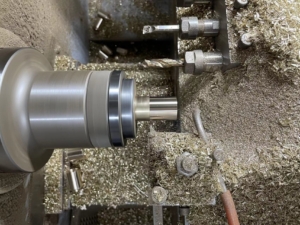CNC Machining Guide & Tips for Beginners
CNC machining, or computer numerical control machining, is a technology that is revolutionizing manufacturing. It allows the use of computer-controlled machines to produce complex parts accurately and efficiently. This can be very difficult for beginners who want to start CNC machining parts. However, with the right guidance and techniques, anyone can get up to speed quickly and start producing high-quality parts. In this article, we’ll cover the general outline of what you need to know to get started with CNC machining.

Learn about CNC machining
CNC machining is the use of computer-controlled machines to cut and shape materials into precise parts and. These machines are programmed using CAD (computer-aided design) software to create detailed designs and specifications. The CNC machine then uses these instructions to automatically move and position the cutting tool to make the part.
Types of CNC machine tools
There are many types of CNC machine tools, each suitable for different machined parts. Some common types include:
– CNC milling machines: These machines use rotating cutting tools to remove material from a workpiece. They are great for making complex shapes.
– CNC lathes: These machines use turning tools to remove material from a rotating workpiece. Typically cylindrical parts are turned.
– CNC Plasma Cutting Machines: These machines use high-speed plasma jets to cut metal materials. They are ideal for cutting thick materials quickly and accurately.

Basic CNC machining process
The basic CNC machining process includes the following steps:
1. Design: Create a 3D model of the part using CAD software.
2. Programming: Generate a CNC program containing tool paths, cutting speeds and feed rates.
3. Setup: Load the material into the CNC machine and hold it in place.
4. Tool setting: Install and adjust the tool on the machine.
5. Run the program: Start the CNC machine and run the program to cut the parts.
6. Inspection: Check the accuracy and quality of the parts.
Advice for beginners
1. Get trained: Before you start CNC machining, it’s crucial to get the proper training. Many community colleges and technical schools offer CNC machining courses that cover the basics and provide hands-on experience.
2. Start with simple parts: It is necessary to start with simple parts to understand the CNC machining process. As you gain more experience, you can move on to more complex parts.
3. Use appropriate safety gear: CNC machining involves the use of rotating cutting tools and high-speed machinery, so it is essential to wear appropriate safety gear such as safety glasses and ear protection.
4. Understand the cutting tools: Different materials require different cutting tools. It is important to understand the various types of cutting tools available and how to choose the right tool for your project.
5. Optimize cutting parameters: To obtain the best results, cutting parameters such as cutting speed, feed and depth of cut must be optimized. Experiment with different settings to find the combination of parts that works best for you.
6. Maintain your machine: Regular maintenance of your CNC machine tools is essential to ensure optimal performance and longevity. Keep your machine clean and well-lubricated, and inspect it regularly for any signs of wear or damage.

in conclusion
CNC machining is a powerful technology that helps you manufacture high-quality parts with high precision and efficiency. By following the tips outlined in this guide and gaining experience through practice, you can quickly become proficient in CNC machining. Remember to always prioritize safety and quality on the job, and don’t be afraid to ask for help or guidance when needed. With dedication and perseverance, you can unlock the full potential of CNC machining and take your manufacturing skills to the next level.

Leave a Reply
Want to join the discussion?Feel free to contribute!